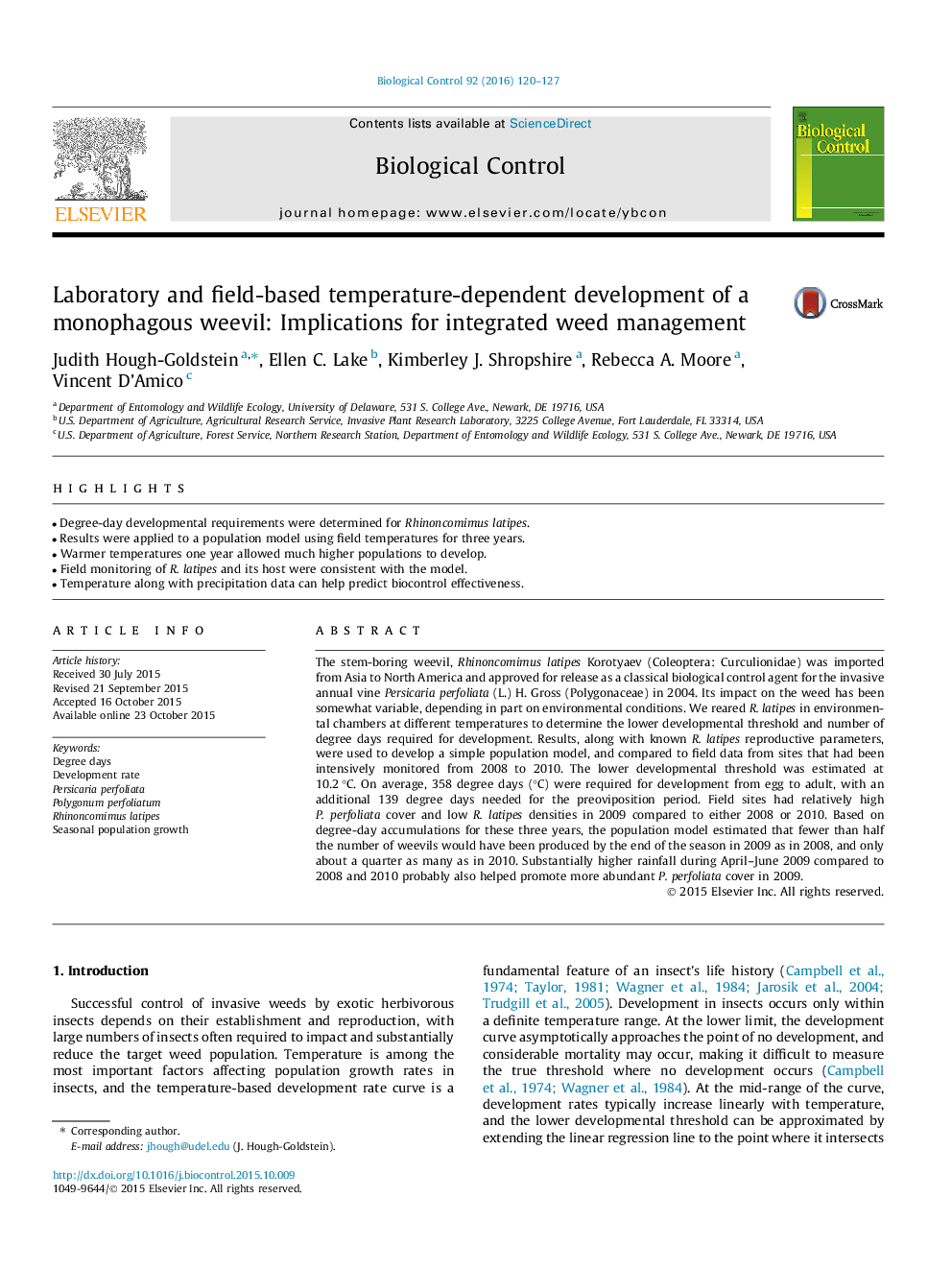| کد مقاله | کد نشریه | سال انتشار | مقاله انگلیسی | نسخه تمام متن |
|---|---|---|---|---|
| 4503713 | 1624242 | 2016 | 8 صفحه PDF | دانلود رایگان |
• Degree-day developmental requirements were determined for Rhinoncomimus latipes.
• Results were applied to a population model using field temperatures for three years.
• Warmer temperatures one year allowed much higher populations to develop.
• Field monitoring of R. latipes and its host were consistent with the model.
• Temperature along with precipitation data can help predict biocontrol effectiveness.
The stem-boring weevil, Rhinoncomimus latipes Korotyaev (Coleoptera: Curculionidae) was imported from Asia to North America and approved for release as a classical biological control agent for the invasive annual vine Persicaria perfoliata (L.) H. Gross (Polygonaceae) in 2004. Its impact on the weed has been somewhat variable, depending in part on environmental conditions. We reared R. latipes in environmental chambers at different temperatures to determine the lower developmental threshold and number of degree days required for development. Results, along with known R. latipes reproductive parameters, were used to develop a simple population model, and compared to field data from sites that had been intensively monitored from 2008 to 2010. The lower developmental threshold was estimated at 10.2 °C. On average, 358 degree days (°C) were required for development from egg to adult, with an additional 139 degree days needed for the preoviposition period. Field sites had relatively high P. perfoliata cover and low R. latipes densities in 2009 compared to either 2008 or 2010. Based on degree-day accumulations for these three years, the population model estimated that fewer than half the number of weevils would have been produced by the end of the season in 2009 as in 2008, and only about a quarter as many as in 2010. Substantially higher rainfall during April–June 2009 compared to 2008 and 2010 probably also helped promote more abundant P. perfoliata cover in 2009.
Journal: Biological Control - Volume 92, January 2016, Pages 120–127
